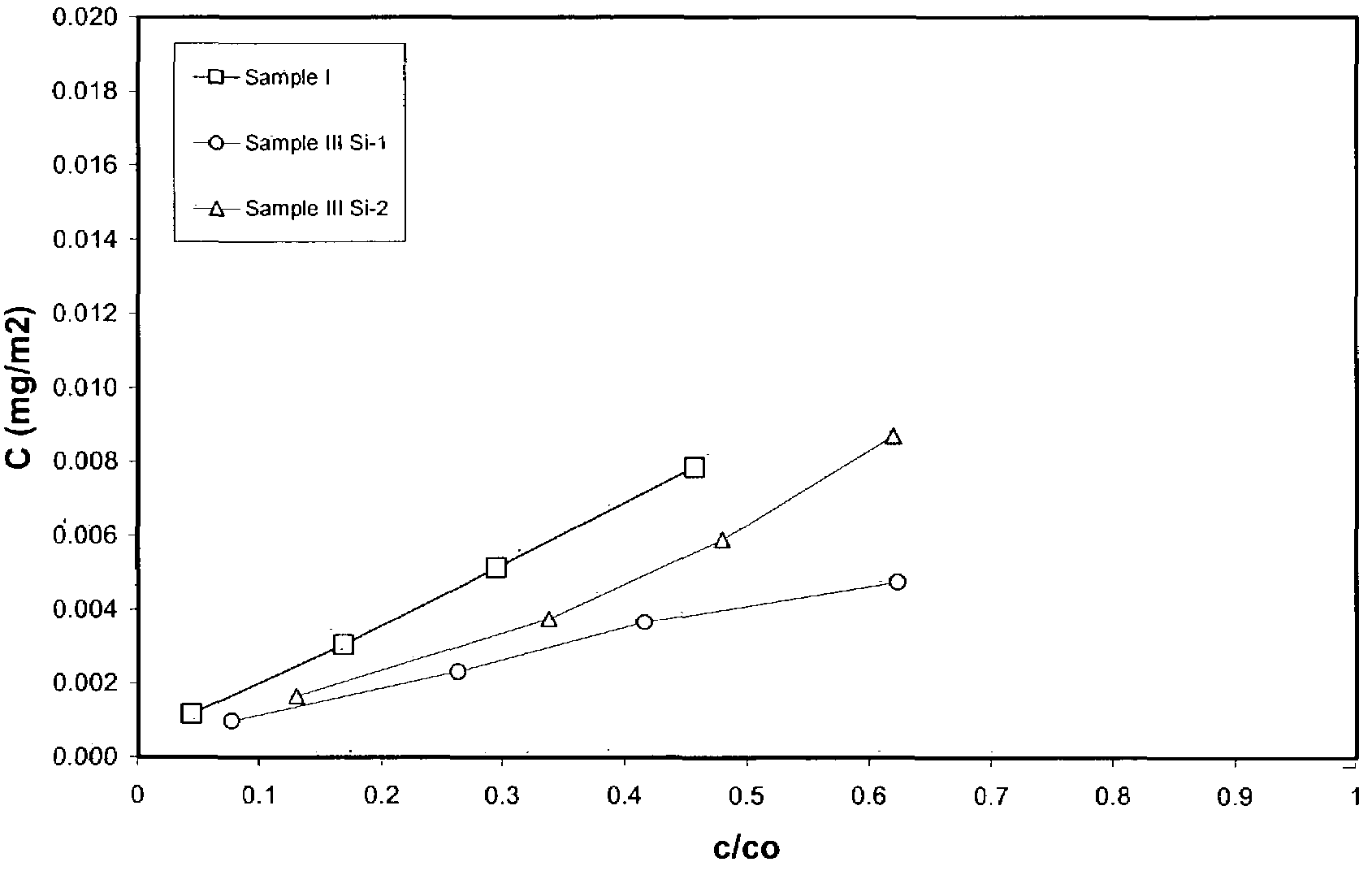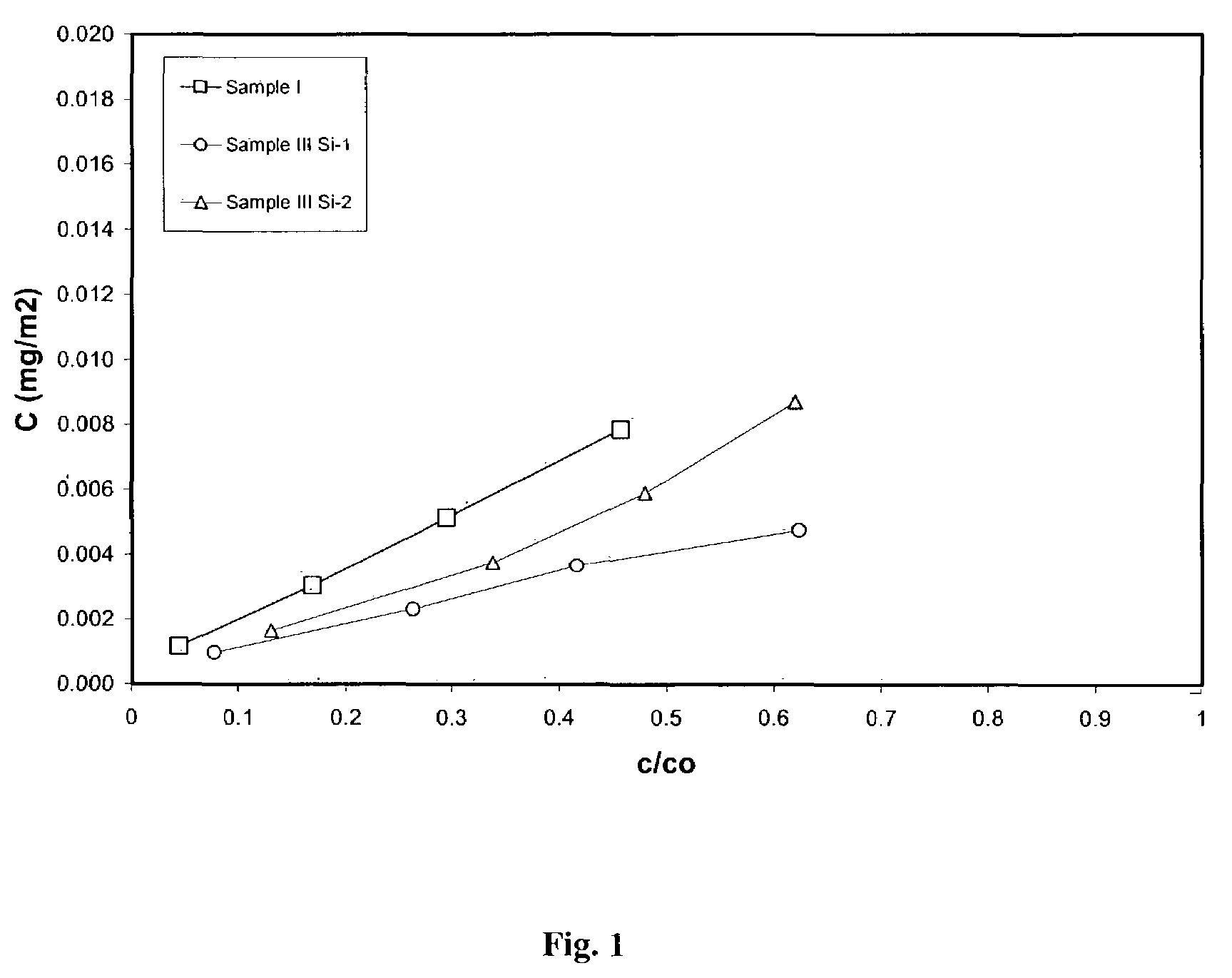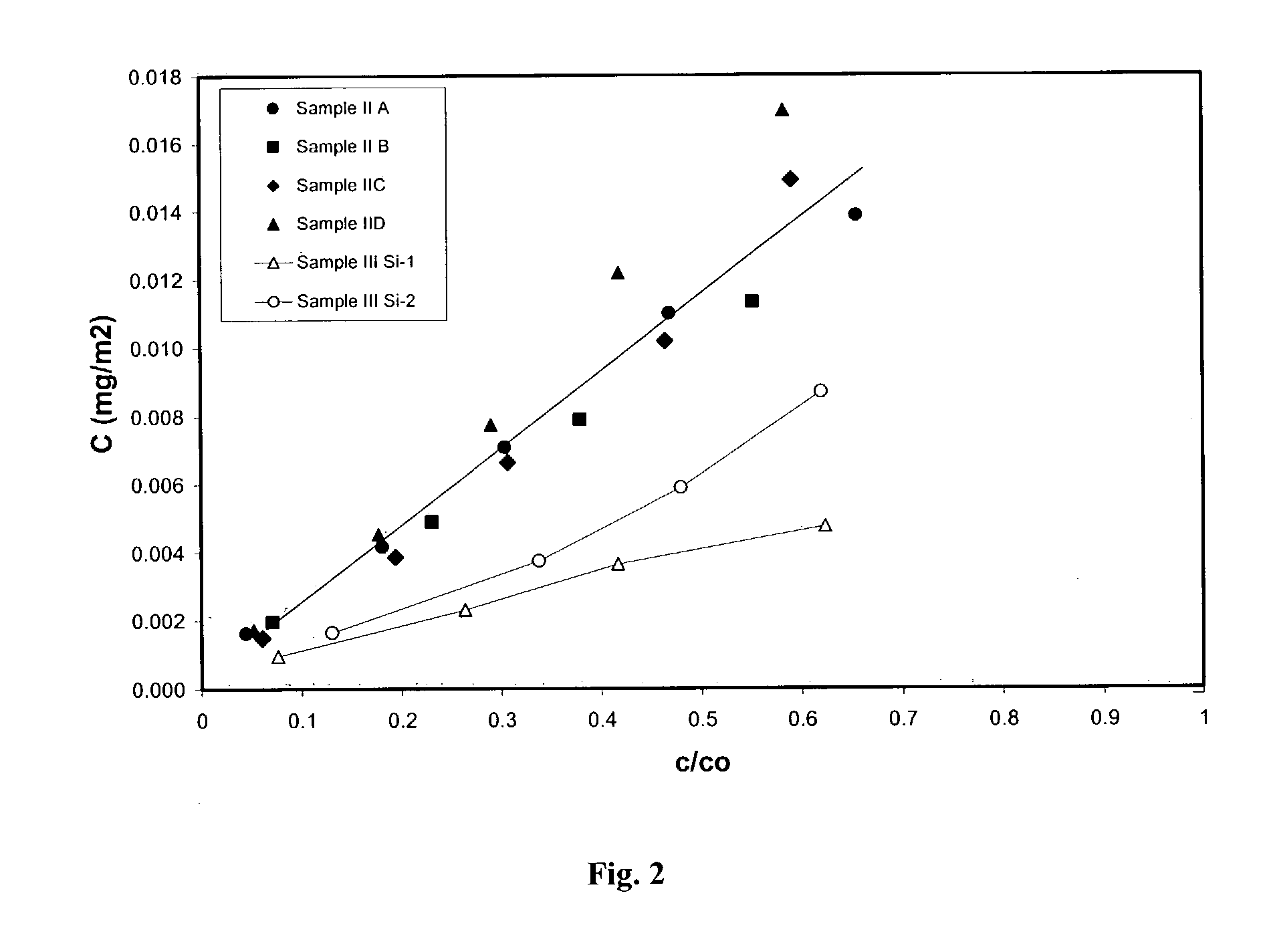Process for removal of nitrogen containing contaminants from gas oil feedstreams
a technology of nitrogen containing contaminants and gas oil, which is applied in the direction of removing heteroatoms in refining, chemical apparatus and processes, physical/chemical process catalysts, etc., can solve the problems of imposing tight quality regulations, affecting the quality of gas oil, so as to achieve low pollution levels and reduce pollution. , the effect of effective and efficient manner
- Summary
- Abstract
- Description
- Claims
- Application Information
AI Technical Summary
Benefits of technology
Problems solved by technology
Method used
Image
Examples
example 1
Formation of Silica-Zirconia Adsorbent.
[0092]A cogel of silica-zirconia was formed using a mixing nozzle having the capability for concurrent introduction of two liquid streams followed by passage of the introduced liquids through a tortuous path capable of providing rapid mixing of the streams. An aqueous solution of sodium silicate (analysis: 24.2% SiO2, 7.5% Na2O) was introduced into the mixing nozzle at the rate of 29.5 1 / hr while simultaneously introducing, at a rate of 10.5 1 / hr, a sulfuric acid solution having zirconium orthosulfate dissolved therein (analysis: 30.7% H2SO4; 3.2% ZrO2). Upon exiting from the mixing apparatus, a silica hydrogel having zirconium metal as the Lewis acid promoter was formed within 11 minutes. 2500 parts of the resultant hydrogel was washed by passing 2100 parts of water maintained at 60° C. through the hydrogel product over a one hour period. This washing step was repeated three additional times. After the final wash, the resultant hydrogel was se...
example 2
Formation of Alumina Modified Silica Adsorbents
[0101]Four samples of spray dried silica gel having aluminum atoms in the matrix to impart Lewis acidity were formed as follows.
[0102]IIA. An aqueous silica sol was formed by initially dissolving sodium silicate (analysis: 24.2% Sio2, 7.5% Na2O) in water heated to 85° C. at a silicate / H2O ratio of 0.15 to produce an aqueous silica sol. The silica sol was mixed with carbon dioxide at a rate such that the gel time of the silica sol was between 10 and 30 seconds. The mixing was performed using a pipe reactor to enable intimate mixing of the materials. The gel was further mixed in the reactant water for approximately 140 minutes to allow gel structure development to be completed. The gel was then pumped through a static mixer while adding an aluminum sulfate solution at the silica to alumina ratio 28 / 5. Due to the change in pH, carbon dioxide gas expelled from the gel mixture. The resultant alumina-silica hydrogel was dewatered at 200° C. f...
example 3
Formation of Alumina-Titania Adsorbent
[0106]Aluminum isopropoxide is hydrolyzed by introducing it into water being maintained at 85° C. over a 10 minute period to produce a solution having 15% by weight aluminum in water. The resultant suspension is maintained at 85° C. for 20 minutes. The material is then peptized by the addition of a solution of titanium tetrachloride in isopropanol. The resulting material is dried by heating at 200° C. for 20 hours to produce an alumina-titania cogel.
PUM
| Property | Measurement | Unit |
|---|---|---|
| surface area | aaaaa | aaaaa |
| surface area | aaaaa | aaaaa |
| diameter | aaaaa | aaaaa |
Abstract
Description
Claims
Application Information
 Login to View More
Login to View More - R&D
- Intellectual Property
- Life Sciences
- Materials
- Tech Scout
- Unparalleled Data Quality
- Higher Quality Content
- 60% Fewer Hallucinations
Browse by: Latest US Patents, China's latest patents, Technical Efficacy Thesaurus, Application Domain, Technology Topic, Popular Technical Reports.
© 2025 PatSnap. All rights reserved.Legal|Privacy policy|Modern Slavery Act Transparency Statement|Sitemap|About US| Contact US: help@patsnap.com



